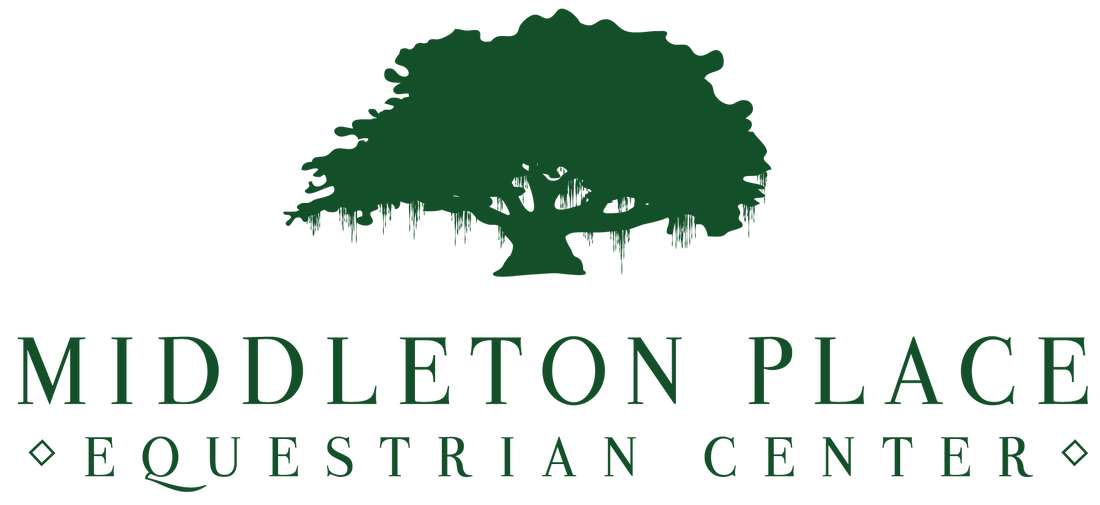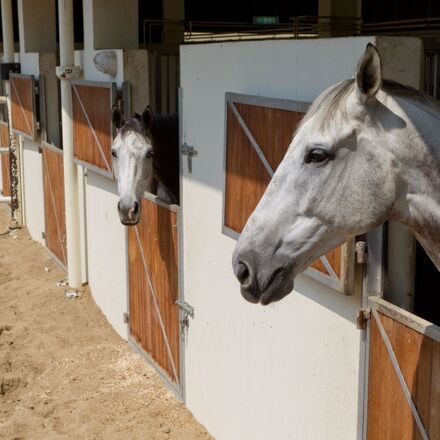 To kick off this New Year, we are going to be talking about one of our most important services and attributes; boarding your horse at Middleton Equestrian Center! Hello trail friends, a very happy new year to all of you! We hope you had a wonderful holiday season with your loved ones, and we hope you had the opportunity to take advantage of our last two blogs. We hope you took those tips and suggestions to heart to prepare your horses, stables, and barns for the cold winter weather that has finally arrived. While we might not see snow this year as our friends in North Carolina or our friends farther up north will, it has still been cold and wet here in the Lowcountry. Speaking of the Lowcountry, did you give the gift of Middleton this past holiday season? Or did you receive the gift of a trail ride with us? We can't wait to see you soon to celebrate that gift together. We are currently doing our Historic Trail Rides every day at 10 am, 12 pm, and 2 pm, with additional 4 pm rides on Friday, Saturday, and Sunday. We do prefer that you book your rides online, but you can also call us at 843-556-0449. Are you looking for the best trail rides and horseback riding in Charleston, South Carolina? You've found it! We have beautiful trails that intertwine through age-old treas, inspiring views of Middleton Place, and a guide that will accompany you to describe the history and stories we've seen and learned over the years. Middleton Place Equestrian Center is guaranteed to please all of your friends and family! We also ended 2020 on a high note, and were awarded Travelers Choice in 2020 by TripAdvisor! One of our most important services and offerings at Middleton is our horse boarding! We want to share more about it with you and talk more about it this year, so please make sure to keep up with our blog and contact us with any questions or comments. We are Charleston's premier boarding and training facility. Our boarding barns feature 46 spacious and well ventilated 12' by 12' stalls, wood shavings, individual fans, and thick stall mats. Our boarding includes feeding your horse high-quality grains and timothy/orchard hay 2-3 times per day based on each horse's individual dietary needs, owner-supplied medications and/or supplements, heightened turnout in one of our numerous large grass paddocks, stall maintenance, and seasonal blanketing. Staff members can schedule vet and farrier services as needed and perform deworming and vaccinations. For all of those new to Middleton Place Equestrian Center and to the idea of boarding your horse in South Carolina, we wanted to dedicate this blog to you and talk about some of the most important reasons and benefits of boarding your horse!
This list could go on and on trail friends, but these are the top benefits of boarding your horse and the many reasons why you should board with us at Middleton Equestrian Center. While boarding and its expenses might seem overwhelming to many new horse owners, think about all the time and money it will end up saving you overall. Also, consider the fact that you'll be able to spend more time with your horse doing exactly what you love. While you might not be able to hear or see them first thing in the morning, you also won't be getting up at the crack of dawn in the worst types of weather to care for them either. We would love to have you board with us! For more information or questions, please don't hesitate to reach out to us! Until next time, stay safe, and be well. We look forward to seeing you on our trails soon!
8 Comments
In part two of this blog series, we are going to finish talking about preparing your horses, barns, and stables for winter!
Hello trail friends, and welcome back to the blog! We hope that you've been working on going through the checklist we shared with you in part one of this blog and putting it to good use for your horses, stables, and barns! We also hope that it helped prepare you with any last-minute items you might have forgotten or might have not even thought about. For all of our first-time horse owners, we know that every changing season brings another lesson to learn, more excitement, and even more surprises. Owning a horse for the first time is very similar to having a child. It is a beautiful and magnificent creature that needs your help, dedication, and care. The longer you have your horse you find out more and more things that all the manuals and books never mentioned. They're worth it though, aren't they? While so many people might hate the cold weather, especially for those not used to it here in Charleston or the South East, it might surprise you that it can still be a very wonderful and beautiful season with your horse. There is nothing quite like seeing a horse crunch its way through a frosty field in the morning while their breath puffs up around their head. There is also nothing like watching a horse play in the snow, but that might be an even rarer event here in Charleston. You might have to make a trip up north to see that! To make this winter season as special as it can be, make sure to take this blog to heart. Make sure to follow all of the tips, suggestions, and ideas we are providing in both of these checklists to allow both you and your horse to enjoy this chilly season. If you put the work in, this will be an easy winter to navigate and work through. After this crazy year, that is something we all need, right? For all of our horse owners, don't forget that we have some of the best horse boardings right here in Charleston. We are here to help care for your horse when you need it most. If your stables are barns are ill equipt for the season, if you need to go out of town on an emergency, or just need an extra pair of hands Middleton Equestrian Center boarding is here for you. Please don't hesitate to reach out and talk with us if you have any questions or comments about our horse boarding! Also, we are still open for our historical trail rides! Dress in layers and come see the Lowcountry in a way you never have before! We are still following all COVID precautions, and what better way to adventure out and stay socially distant than on the back of a beautiful horse? If you are still looking for a wonderful holiday or end of the year gift, shop small and give big with Middleton this year! Gift cards are available to give to all of your loved ones. Introduce them to the best horseback riding in Charleston, and share some of the best horseback riding trails in Charleston with your loved ones. Make sure to visit our website to learn more, and we are always here for all of your questions! Let's get back to the blog series, shall we? We still have a little wiggle room for these last-minute additions for winter preparations since it has been a mild winter here in the Lowcountry so far, but as we all know that can change in an instant. Let's get back to work! COMFY AND COZY! As we mentioned in the first part of this blog, your horse will be burning a lot more calories during the winter months to keep them warm. While they are burning these calories to stay warm and eating more to help with this, they will still need a little extra protection from the cold. Allow their natural coats to grow out as much as possible, but keep up with their grooming habits and schedules. If you plan or working or training your horses hard during these cooler months, keep them trimmed. This will make sure that they will not get overheated during their training and work sessions. In either of these situations, make sure to have warm, waterproof, and lightweight blankets to provide extra warmth throughout the winter. Make sure to check your horse's skin often when they wear their blankets for extended periods. Blankets, while extremely helpful, can cause irritation and sores from rubbing or long term wear if not properly taken care of. Before blanket wearing weather arrives, make sure to inspect and clean each of your blankets, since it has been almost a year since they were last used or touched. Replace and repair them if needed before it gets too cold. Also, make sure you have enough blankets for all of your horses. Your younger horses might have had a growth spurt since the last time they wore their blankets, and your older horses might have lost some weight due to their age. If more blankets need to be purchased for these reasons, make sure to do so! Blankets need to fit your horses properly. Ill fitted blankets can cause irritation, be unsafe, or not provide the warmth your horses need while wearing them. The cold weather will attack one of your horse's most fragile parts of their bodies, and that is their feet! Make sure if they are going to be shod all winter that you pick the proper shoe fittings with your Ferrier. You can choose shoes that will help them navigate the snow and ice much easier and help them prevent slipping. Regardless if you are going to be choosing to keep your horses shod or not, their hooves need to be cleaned of cold wet mud and ice every day to avoid infection and irritation. Make sure that they are also dry at the end of their day when they are put back into their stables. If you are choosing to go without shoes for the winter months, make sure to do so before it gets too cold, and give them time to acclimate to this change. HEALTHY CHANGES! Make sure your horse has a proper and thorough visit with the vet before the cold weather hits and stays around for a while. It might have been a minute since their winter or spring checkup, and this is a good opportunity to catch any early issues or help prevent anything that could potentially happen to them during the cold months. This can be a great time to ask for other supplements and additives for your horses from your vet to help make the winter months healthier and happier for them. Make sure you give your horse a good balance of indoor and outdoor time throughout the winter. However, it is important to make sure that they are kept away from deep snowdrifts and extra icy paths to prevent slipping and damage done to their legs. Make sure the ventilation in your barns and stables is enough to keep fresh air flowing throughout, enough to limit dust and debris build-up, but not enough to cause drafts in the barn. Your horse's skin can become extra sensitive through the harsh cold months so if it is possible, exercise them in a dry and clean area through the winter! Also, consider your health, safety, and comfort this time of year. If you get sick and you're unable to care for your horses, what will they do without you? Make sure you have the proper winter clothing to keep you warm and safe while being comfortable enough to do your job and daily tasks of caring for your horse. Also, think about your day to day tasks and duties, and ways to make them easier. One way to help is to insulate your hand tools. You can cover them with blankets when they're not being used, store them in styrofoam, or you can even slip styrofoam pipes over the handles of all of your hand tools to create a little extra insulation. Grabbing or using very cold hand tools can be cold enough to burn, even when wearing gloves. Make sure to properly clean all of your hand tools before these winter months and before the new year. When you get into the depths of winter, you won't want to stop and make time for doing simple tasks like that, you will want to get your work done and get back inside. This is also an excellent time to service all of your power equipment on your property. Check all of the engines, oil levels, lubricants, and tires on your tractors, mowers, trucks, snowblowers, and all of your powered equipment. When stocking up on equipment and supplies for the winter, don't forget back up items to help with broken hand tools, power tools, and all of your vehicles. Again, you want all of these items to be working properly so when the bad weather comes, you won't get stuck with a broken-down tractor, truck, or snowblower on the bad weather days. Time to get to work friends! We have been busily working on all of these things ourselves; preparing our horses, barns, stables, tools, equipment, and ourselves for what's to come. Our staff has been working as hard as ever to not only prepare for this but to keep up with keeping our stables and riding equipment sanitized to help keep us all safe during the cold weather. We are thankful that the temperatures during the first few weeks of December have felt more like fall, but who knows when that will change. We also want to thank each of you for what this year has been. You have helped us continue to share our passion and love for our horses and our horse trails. You have helped us continue to show off the beautiful land of the Lowcountry, and you helped keep all of our staff and fellow guests safe and happy. We couldn't be more thankful for all of that! We aren't sure what 2021 will bring, but we hope it's truly a year to celebrate. Stay safe and healthy friends, we can't wait to see you on our trails in the new year! From all of us at Middleton Equestrian Center, we wish you a very Horsey Holiday and a very Horsey New Year! 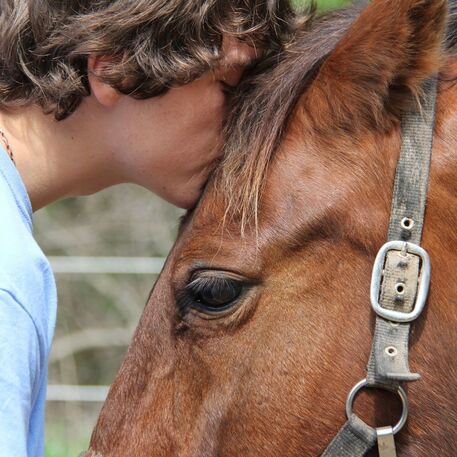 It's the season to be thankful and we have more reasons to be thankful than we can count. Through this crazy year, we wanted to make sure to pause and take a moment of reflection on why we are so thankful for our horses and our wonderful company! Hello, trail friends! Welcome back to our blog. We are taking a break from the trails, and while the horses take a rest and get a snack, we wanted to hop out of our saddles and back into our writing chair. We wanted to check in with all of our readers and supporters, too. We hope you're doing well, spending time with your horses as much as you can, and learning more about our favorite animals every day! With the holidays right around the corner, don't forget to support and love your favorite local small Charleston business. Give the gift of something unique and different this year! Give your loved ones an experience of a lifetime, and gift them with a ride on our amazing trails and the best horseback riding in Charleston! Or even gift yourself with something unique and special this year. Are you visiting our amazing city sometime soon or are you local and looking for something special to experience this holiday season? We can help with that! Make sure to check out the main page of our website and reach out to us to talk about all of your gift-giving needs. We are so excited to speak with you and to have you on our horseback riding trails soon! November is here and Thanksgiving is on our minds. Our horses are dreaming of some extra hay and maybe a few special treats or two. We are all dreaming about our turkey dinners and all the delicious fixings that come with it! Being thankful is also on our minds, and what we've been talking about a lot recently are all the reasons we are thankful for horses and our own personal list of thanksgivings that we've been able to get out of 2020. We thought we'd share our thanksgiving state of mind and pay it forward. In this week's blog, we are going to be talking about all the reasons we're thankful for horses and much more!
What are your favorite reasons that you're thankful for horses? We know the list is endless, and these are just a few of our favorite reasons that we are thankful for every day. Love and thanksgivings have no definition or an end when it comes to horses, and we are sure you understand that. We hope this is a joyful and loving Thanksgiving season for you and yours. Until next time, we look forward to seeing you on our trails soon! In this blog, we are going to be celebrating one of the most popular and oldest horse breeds in the United States, the American Quarter Horse.
Hello, trail friends! Welcome back to the blog! With the dawning of this new month, can you believe there is only a matter of weeks left until the new year? While the year is quickly ending and the weather continues to change, all of us here at Middleton Place Equestrian Center are here to offer the best trail rides and horseback riding in the Charleston area. The weather is still perfectly mild and wonderful to ride in. With beautiful trails intertwining through age-old trees, inspiring views of Middleton Place, and a guide to describe the history and stories we've seen over the years, a visit to Middleton Place Equestrian Center is guaranteed to please friends and family! We offer guided trail rides, tours of the property, and equine boarding with the best care. As of right now, due to the pandemic, please note that we are currently only offering historic trail rides! Enjoy the beautiful weather, the wonderful Lowcountry scenery all while social distancing on the back of a horse. We continue to adhere to the Governors guidelines to help keep our staff and clients safe. All saddles, bridles, and helmets are cleaned after every ride. We are very excited and looking forward to seeing all of you for your next ride very soon! While you are waiting to plan your next ride with us, we wanted to turn back to the history books. In this blog we are going to be sharing the history of one of the oldest and most popular breeds of horse right here in the United States; the American Quarter Horse! Considered one of the oldest and most beloved cultivated breeds in the United States, the Quarter Horse is an incredible example of the melting pot that the United States so proudly boasts to be. The breed itself came from a very long line of breeding some of the most influential and powerful horses from across the globe starting as early as 710. The breed itself saw its true beginning in the 1600s, during the early days of the American Settlers, and was officially solidified in the 1800s with the final addition to the breed, the Mustang. With the addition of the Mustang in its breeding, the modern American Quarter Horse was created and America had its own unique horse native to its shores. Wild Beginnings As we mentioned above, the very beginning of the American Quarter Horses' bloodline can be traced back to 710, when powerful horses were being bred between the North African Barb horses and the native Spanish stock horses. These horses were the ones that accompanied some of the very first Spanish explorers into the new world. They were also the same horses that were left behind by these very early settlers, and many of these horses swam ashore and survived multiple Spanish shipwrecks during these tumultuous years. We have talked about one lineage of these horses a few times throughout the blog, and those are the wild Corolla horses that have made the shores of North Carolina their home. These were not the only horse linage that came from these early settlement horses. Some came into the hands of the Chickasaw Indians that were native to Mississippi, Alabama, and Tennessee. Others went out west to become what we know today as the Mustang. When the second wave of colonists made it to the shores of America in the early 1600s, they brought English stock horses with them. These horses helped them settle the early colonies and survive some of the hardest and harshest years of American settlements. Once they were finally settled, decided they were going to stay, and survived those difficult and challenging years, they could finally have a pastime. One of the most popular pastimes of this generation became horse racing. Colonists were no longer fighting every moment to survive, so they could celebrate with a race or two. When this shift in society happened, the first step in breeding the Quarter Horse happened. Many settlers started trading for and riding the Spanish Barb horses that the Chickasaw Indians had cultivated, cared for, bred, and were known to ride. These horses were then bred with the English stock horses, and the first steps of the Quarter Horse were born. These horses would be bred and cared for over the next 150 years, and according to the American Quarter Horse Association, would become known as the "Celebrated American Quarter Running Horses". The name "Quarter" was given to the horses because this was the distance they were trained to run, about a quarter of a mile on flat grounds in and around colonial towns. The next wave in the development of this breed was in 1752 when a horse named Janus was brought over from England. This stunning horse was the grandson of one of the most influential horses for the foundation of the Thoroughbred horse, the Godolphin Arabian. Once Janus was bred with these blossoming colonial horses, the official prototype of the American Quarter Horse was born, according to the AQHA. These were the horses that lead Americans through the American Revolution and into the wild west and the new frontier. Frontier Horses Once the Atlantic coast had been settled, the itch to continue moving out west was born. American settlers began another great push into unknown lands and the Quarter Horse went with them. These horses, known for their short distanced speed, were now being bred for their stock and strength. Through the early years of the 1800s, this early breed of the American Quarter Horse would be bred with the last few bloodlines that would officially solidify the overall breed. Sir Archy was the first in this line, following by two influential horses named Printer and Tiger. The final piece of the puzzle to the American Quarter Horses bloodline was the powerful Mustang. These free-roaming horses, ancestors of the horses the Spanish explorers left behind, were what made the Plains Indians the strongest mounted warriors that anyone had ever seen, according to AQHA. These new powerhouse horses took settlers out west, help clear and plant this new land, and became the favorites of cowboys and farmers alike. Their strong, stocky, and muscled bodies were perfect for the harsh life and beginnings of the great west, and their gentle dispositions were perfect for caring and interacting with cattle. While farms started to spread across the frontier, so did vast cow farms, all thanks to the Quarter Horse. They were once used as sheer entertainment, and how now become the force of breaking into the frontier. Modern Marvels Today, these beautiful creatures are still bred to have the same features and personalities that broke open the wild west, they just aren't used to forge new lands and farm as they once did. Thanks to the foundation of the American Quarter Horse Association in 1940, the breed became official. New steps were now being taken to preserve the breed. Breeding the Quarter Horse follows incredibly strict guidelines today, and it is dedicated to perfecting the bloodline. The foal has to come from a registered mare and sire to be recognized by the association. They are only allowed to have very limited white markings on their faces and below their knees. There are also only 13 accepted colors recognized by the AQHA ranging from reddish-brown to a stunning grey. They are still known for their muscling, their gentle natures, temperament around cows, versatility, and sprinting speed. While they can still be used for farming, modern technology has moved the Quarter Horses focus and training towards excelling in almost every racing and skilled event that is popular today. With its versatility, the Quarter Horse has become known as one of the most popular breeds, with riding for enjoying being their owner's favorite form of recreation. What a stunning breed and powerful history! They are such influential horses that it is almost impossible not to come across a Quarter Horse at least once in your lifetime. You might even meet one or two at our stables! We hope you enjoyed the history of the Quarter Horse, and we hope this blog has inspired you to book your next visit with us! Until next time, stay safe and stay hopeful everyone! |
AuthorMiddleton Place Team Archives
January 2021
Categories
All
|
|
4280 Ashley River Road, Charleston, SC 29414
[email protected] 843-735-0709 Please also visit: Middleton Place | The Inn at Middleton Place |
Site powered by MadeSimply
|
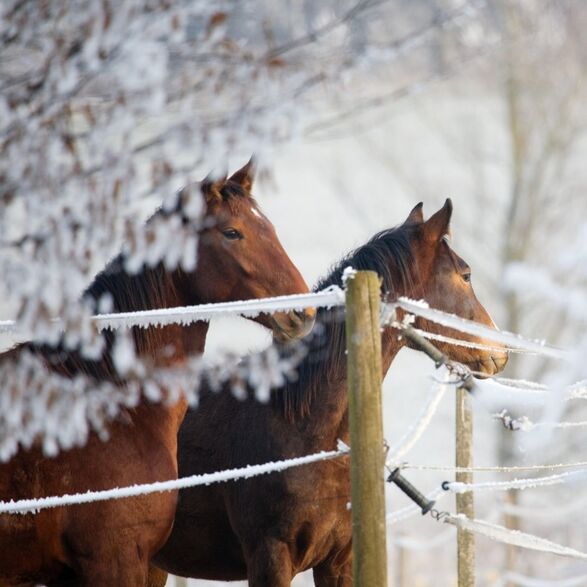
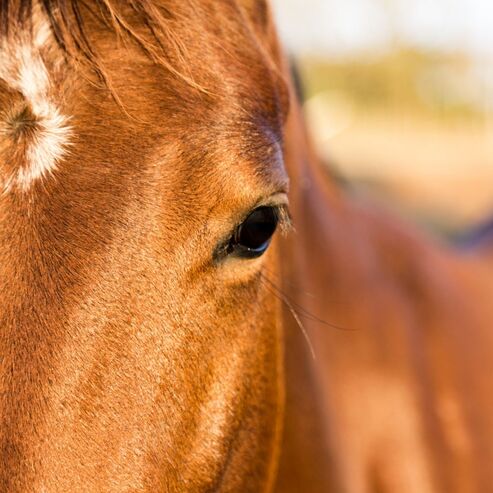
 RSS Feed
RSS Feed

